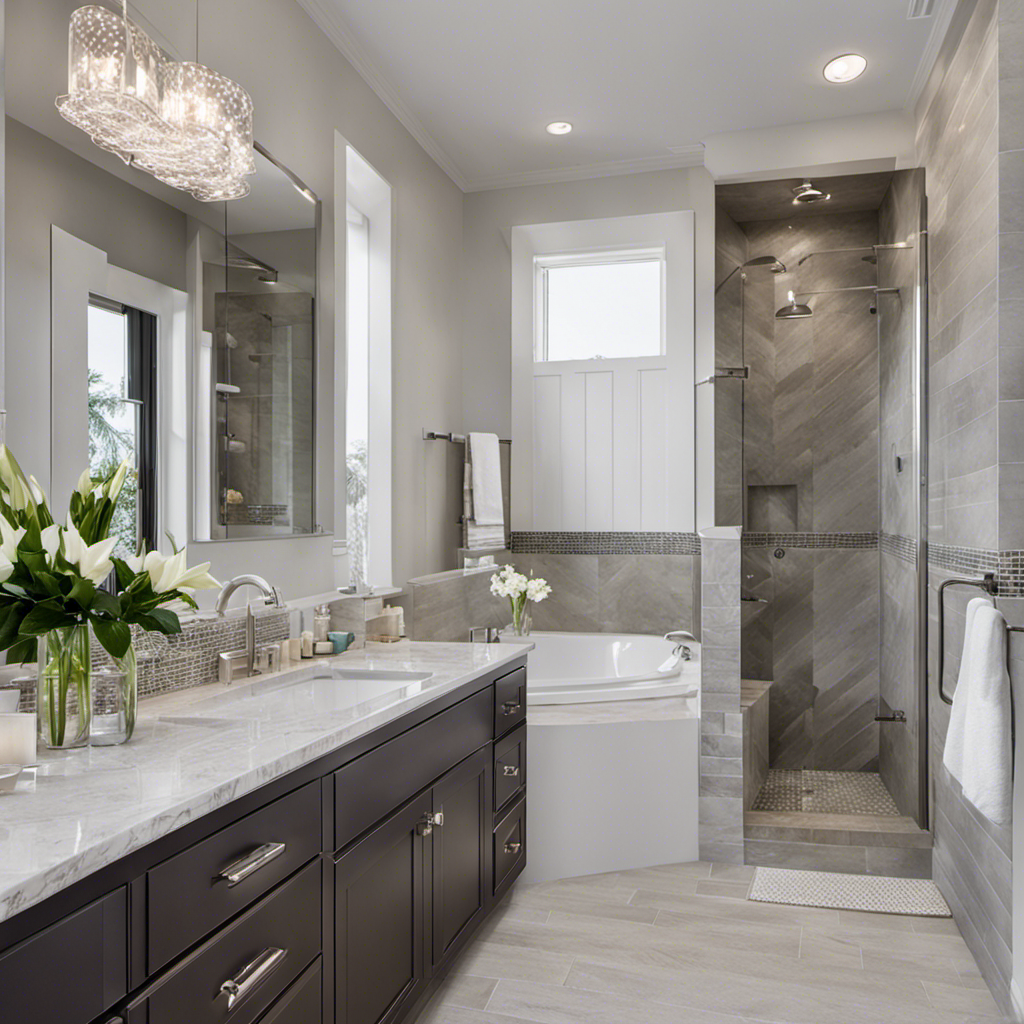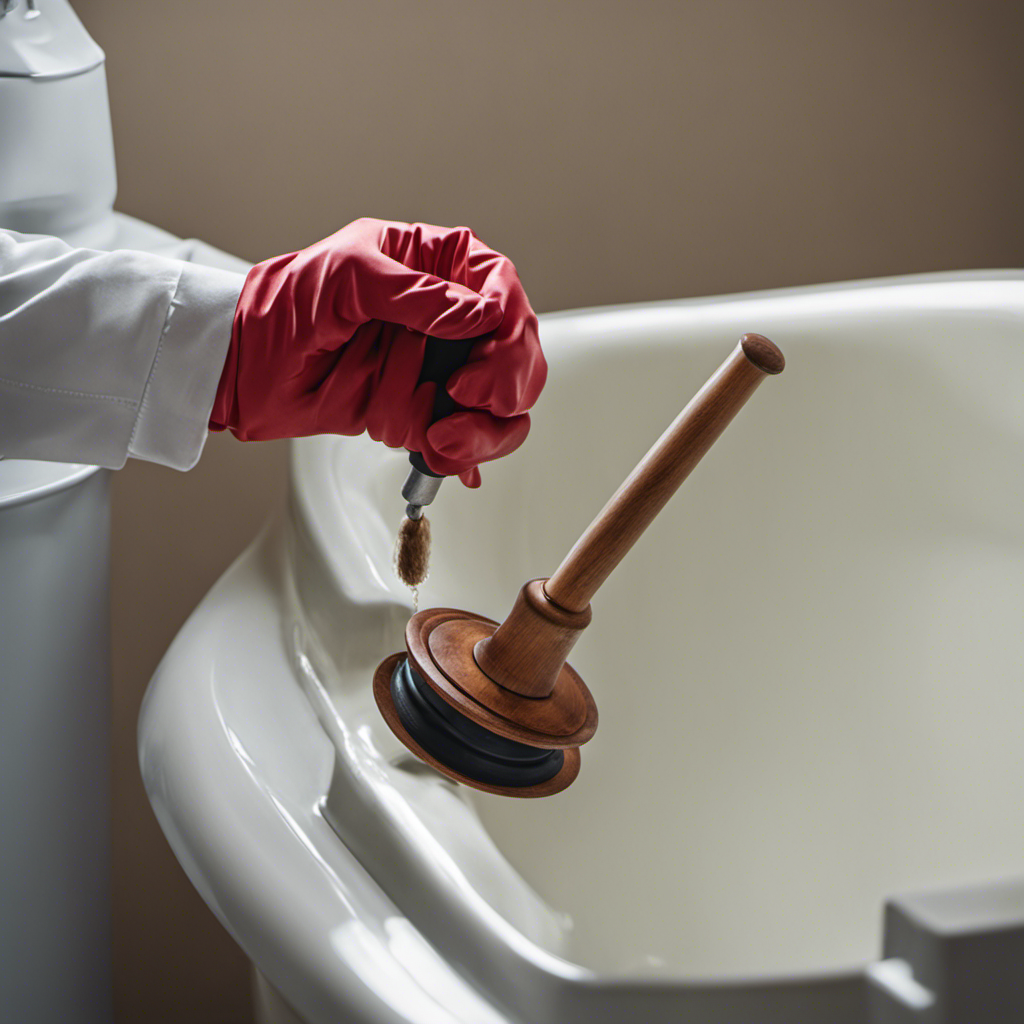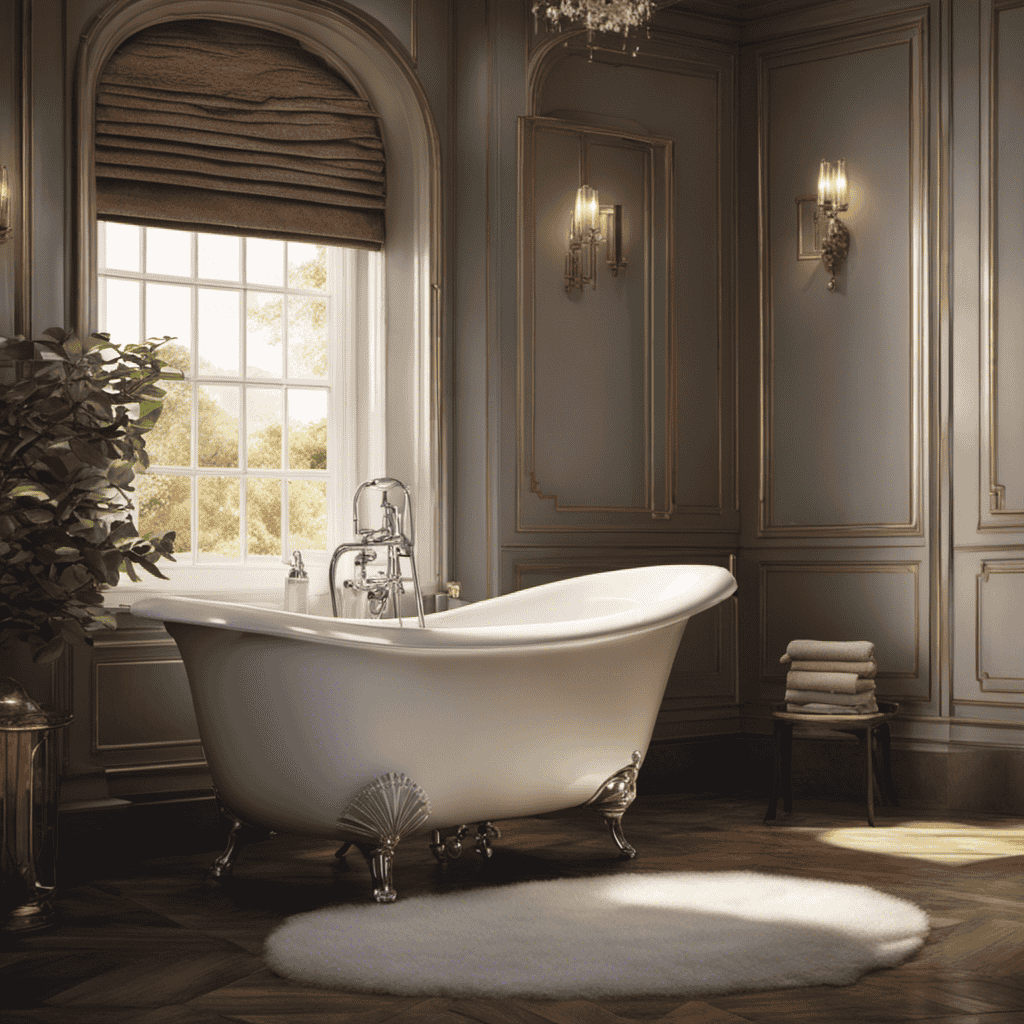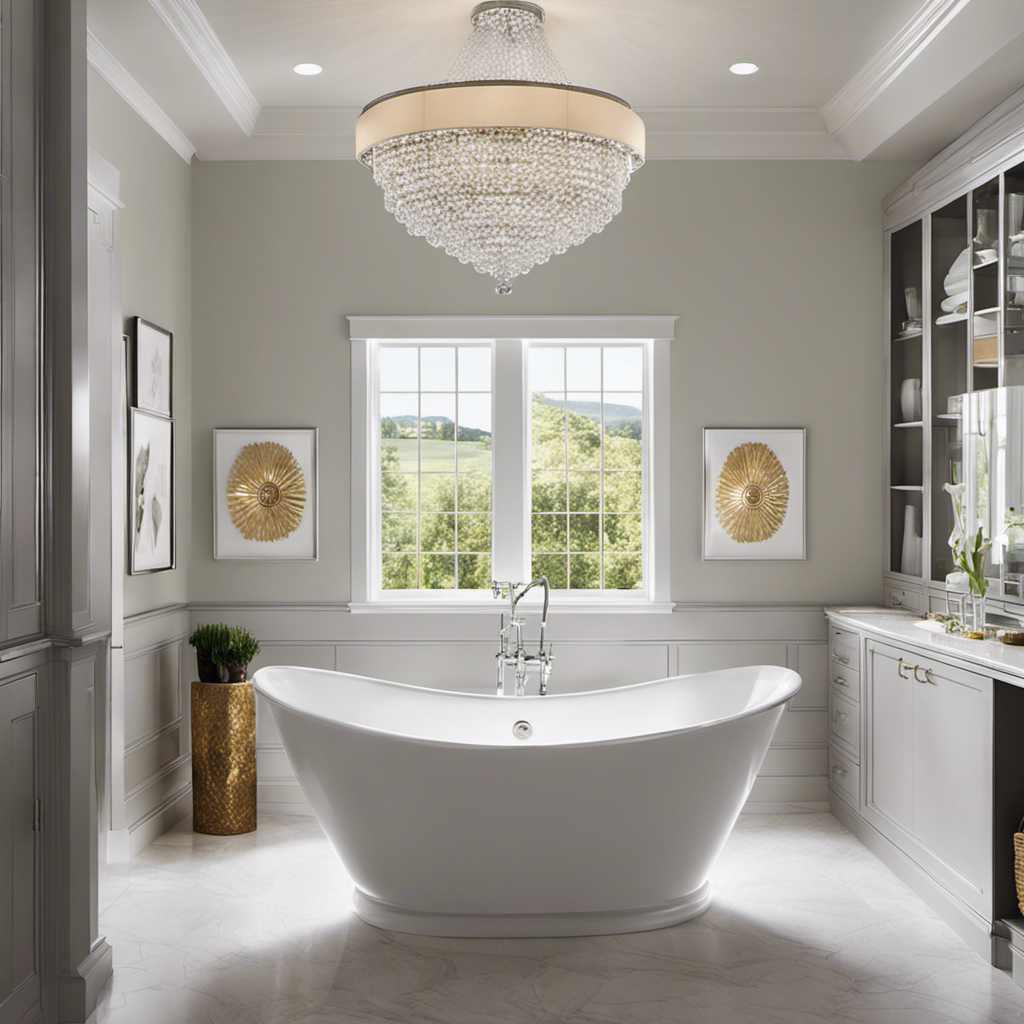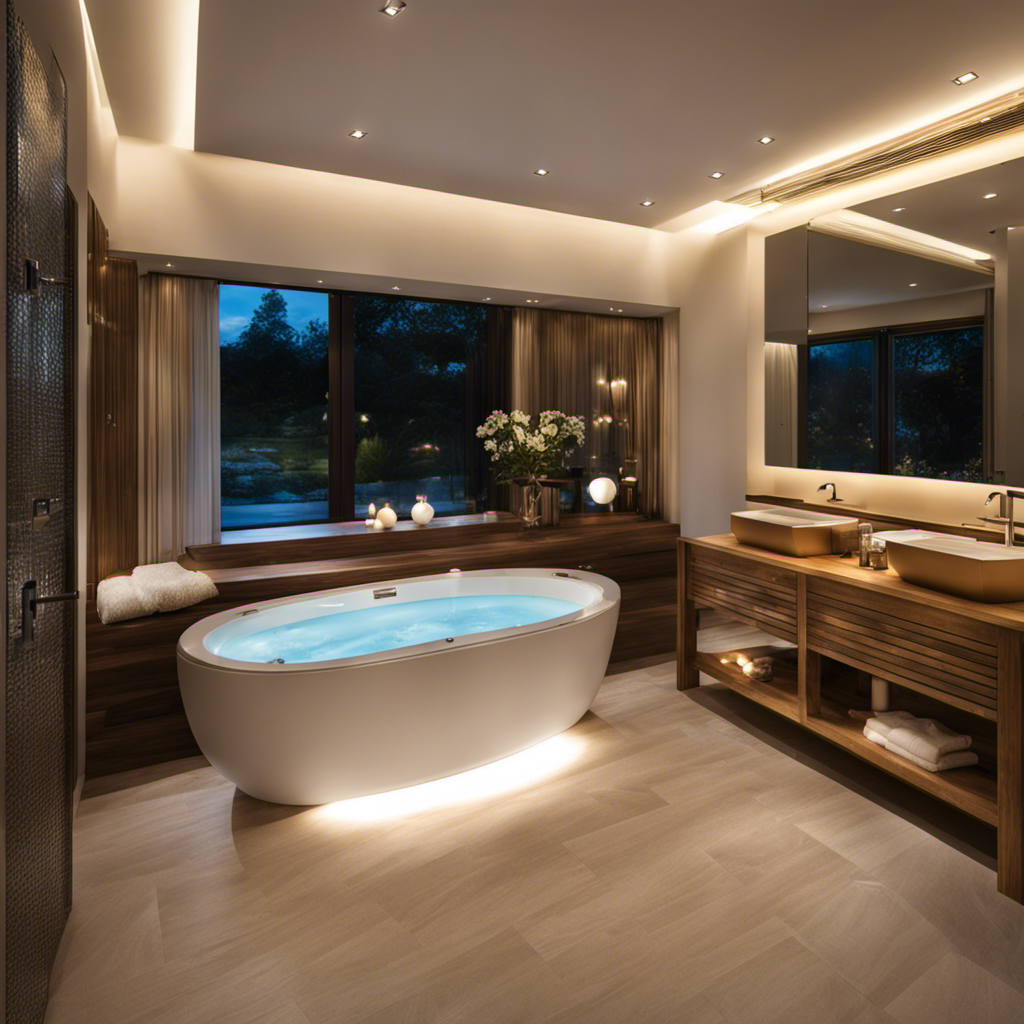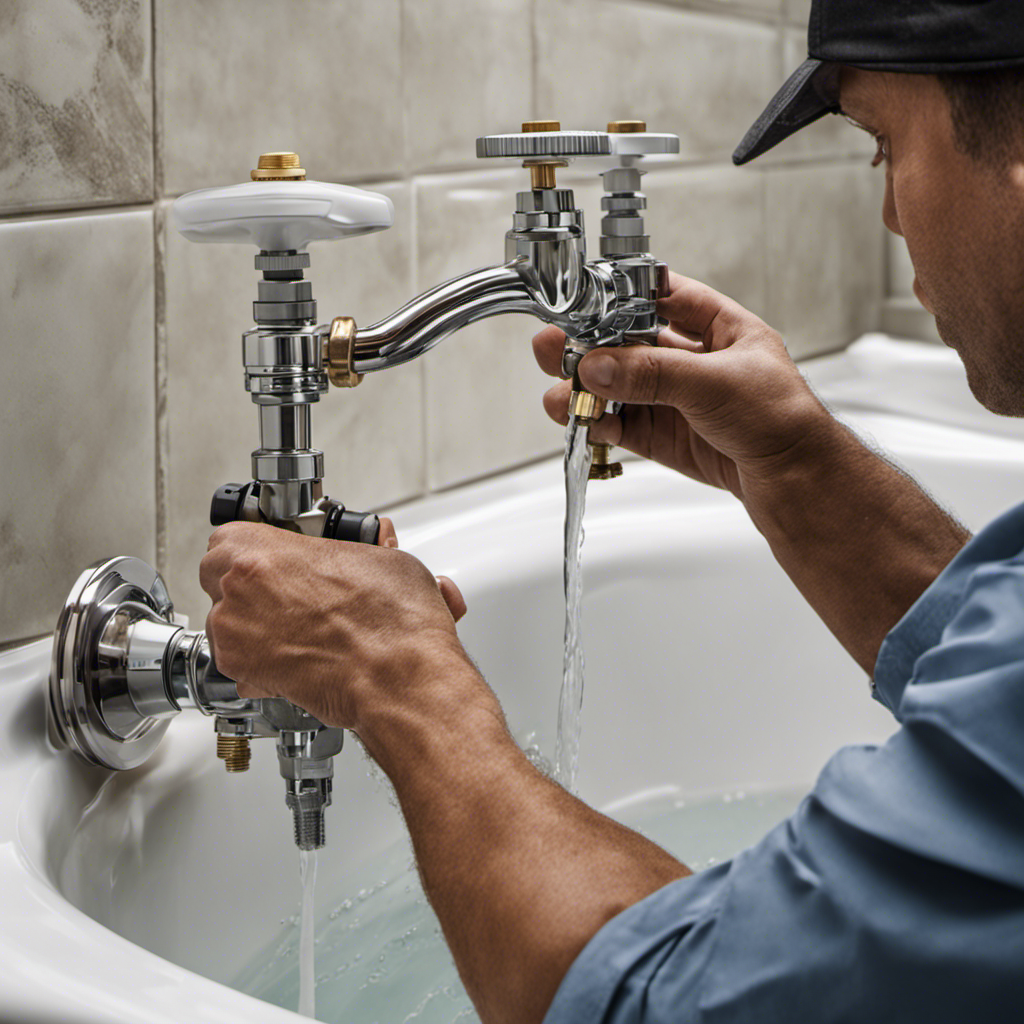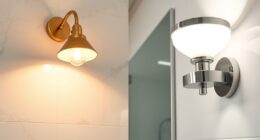As I stood in my bathroom, contemplating the limited space and outdated bathtub, a light bulb went off in my head. It was time to convert my bathtub into a sleek, modern shower.
With a little know-how and determination, I embarked on this exciting DIY project. In this article, I will guide you through the steps to transform your bathtub into a stylish shower oasis.
So grab your tools and let’s get started!
Key Takeaways
- Assess the space and plumbing in the bathroom and consider the budget for the conversion project
- Properly remove the bathtub by turning off the water supply, disconnecting plumbing fixtures, and carefully removing the tub surround, tile, and flooring
- Ensure proper preparation of the area before installing the shower base, including necessary repairs or modifications
- Choose the right shower base material, level and seal it properly, and use the correct tools and materials for installation.
Assessing the Space and Plumbing
Now, you need to take a closer look at the space and plumbing in your bathroom to determine if converting your bathtub into a shower is feasible.
Assessing the budget is crucial at this stage to ensure that you have enough funds to cover the expenses of the project. It is essential to consider not only the cost of materials but also any potential professional help that may be required.
Additionally, determining the necessary tools is vital to ensure a smooth and efficient conversion process. You may need tools such as a reciprocating saw, pipe wrench, and a drill to complete the project successfully.
Removing the Bathtub
First, you’ll need to start by removing the old tub. This step is crucial in the process of converting a bathtub into a shower. To begin, turn off the water supply and disconnect any plumbing fixtures connected to the tub.
Next, remove the tub surround and any tile or flooring surrounding the bathtub. Use a pry bar and hammer to carefully remove the bathtub itself, taking caution not to damage the surrounding walls or plumbing.
Once the tub is removed, inspect the area for any necessary repairs or modifications before proceeding with the bathtub replacement.
Now that the old tub is out, it’s time to move on to the next step: installing the shower base.
Installing the Shower Base
To begin the installation process, you’ll need to ensure that the area is properly prepared for the shower base.
This involves removing any existing flooring, ensuring that the subfloor is level and sturdy, and making sure the drain is properly positioned.
Once the area is prepared, you can move on to choosing the right shower base material.
There are a few options to consider, including acrylic, fiberglass, and tile.
Each material has its own advantages and disadvantages, so it’s important to choose one that suits your needs and preferences.
Finally, it’s crucial to be aware of common mistakes to avoid when installing a shower base.
These include not properly sealing the base, not properly leveling it, and not using the correct tools and materials for the job.
Waterproofing and Tiling the Shower Area
Once the shower base is properly installed, it’s time to start waterproofing and tiling the shower area. This step is crucial to ensure a durable and long-lasting shower.
When it comes to choosing the right shower tiles, it’s important to consider both aesthetics and functionality. Look for tiles that are specifically designed for wet areas and have a low absorption rate.
As for waterproofing methods and materials, there are several options available such as waterproof membranes, cement boards, or liquid waterproofing systems. These materials create a barrier that prevents water from seeping through and causing damage. When applying the waterproofing materials, make sure to follow the manufacturer’s instructions carefully.
Once the waterproofing is complete, you can proceed to tile the shower area, taking into account proper spacing and grouting.
With the waterproofing and tiling done, it’s time to move on to the next step of adding the shower fixtures.
Adding the Shower Fixtures
Now that you have finished waterproofing and tiling the shower area, it’s time to focus on adding the shower fixtures. This is an exciting step as it brings us closer to having a fully functional shower.
Here are three important things to consider when it comes to adding the shower fixtures:
-
Showerhead selection: Choosing the right showerhead is crucial for a satisfying shower experience. Consider factors such as water pressure, spray patterns, and water-saving features. There are various types available, including fixed showerheads, handheld showerheads, and rain showerheads. Select one that suits your preferences and bathroom design.
-
Shower curtain options: Installing a shower curtain is essential to prevent water from splashing out of the shower area. Consider the style, material, and length of the curtain. Opt for a waterproof material that is easy to clean and maintain. Additionally, choose a curtain that complements the overall aesthetic of your bathroom.
-
Other fixtures: In addition to the showerhead and curtain, you may also need to install a faucet, handles, and a drain. Ensure that these fixtures are of good quality and properly installed to avoid any leaks or issues in the future.
Frequently Asked Questions
Can I Convert My Bathtub Into a Shower if I Have Limited Space in My Bathroom?
Yes, you can convert your bathtub into a shower even if you have limited space in your bathroom. I have experience with this and can provide knowledgeable and precise advice on how to do it effectively.
Is It Possible to Convert a Bathtub Into a Shower if I Live in an Older Home With Outdated Plumbing?
Yes, it is possible to convert a bathtub into a shower in an older home with outdated plumbing. However, it may present some challenges due to limited space constraints. Proper planning and professional assistance are recommended.
What Are Some Common Challenges or Obstacles That May Arise When Removing a Bathtub During the Conversion Process?
When removing a bathtub, challenges and obstacles can arise. It’s important to consider plumbing adjustments, structural modifications, and potential damage to surrounding tiles or walls. Professional help can ensure a smooth conversion process.
How Can I Ensure That the Shower Base Is Properly Installed and Level?
To ensure proper installation and levelness of the shower base, it is crucial to follow precise techniques. By carefully measuring, using a level, and expertly securing the base, you can create a stable and functional shower space.
What Are Some Recommended Waterproofing Techniques and Materials to Use When Tiling the Shower Area?
When tiling a shower area, it’s important to use proper waterproofing techniques and the best materials. I can share my knowledge and experience to guide you in selecting the right materials and ensuring a watertight installation.
Conclusion
In conclusion, converting a bathtub into a shower can be a challenging yet rewarding project. By assessing the space and plumbing, removing the bathtub, installing the shower base, waterproofing and tiling the shower area, and adding the shower fixtures, you can transform your bathroom into a modern and functional space.
Did you know that according to a recent survey, 67% of homeowners prefer showers over bathtubs? This statistic highlights the growing trend of shower conversions and the desire for more practical and efficient bathroom designs.
With the right knowledge and experience, you can successfully complete this project and enjoy the benefits of a shower in your bathroom.
